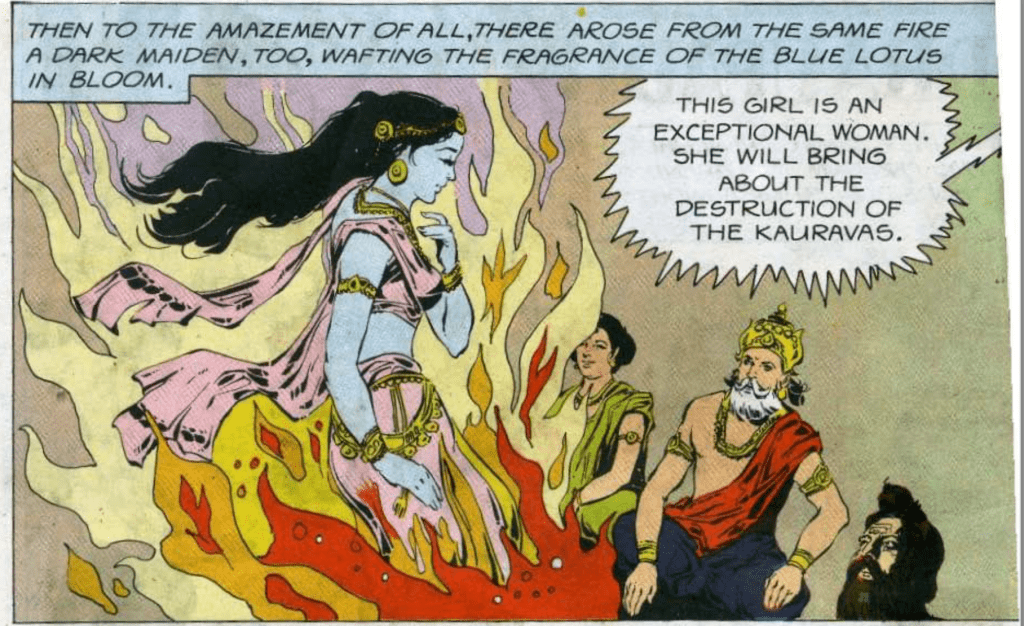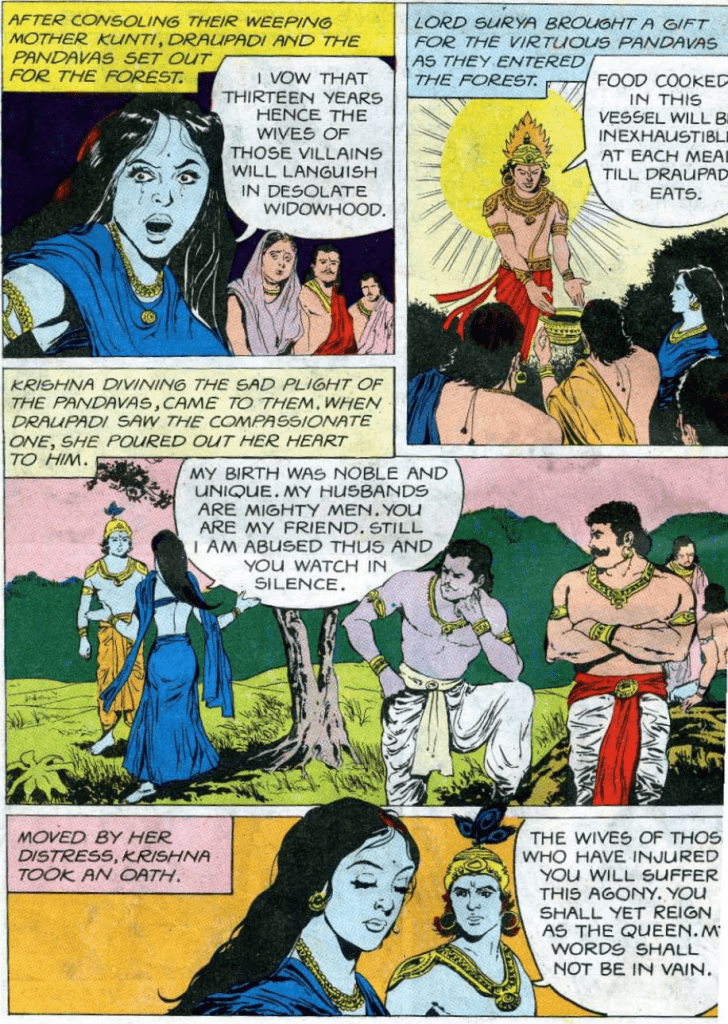Allison Carr
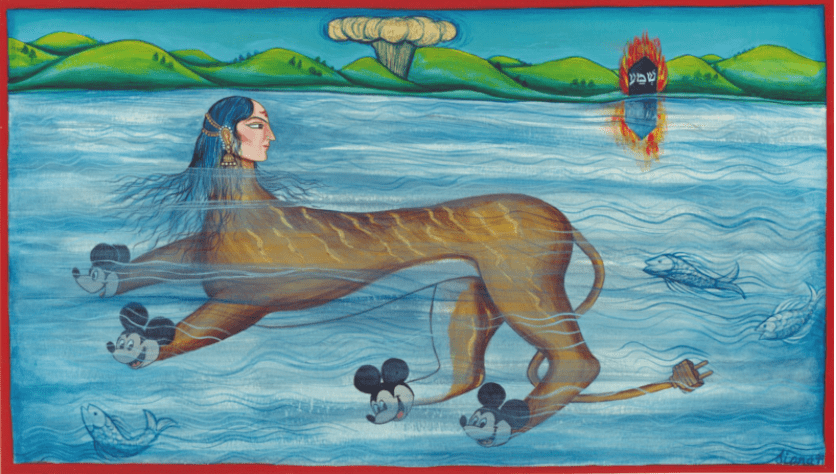
Siona Benjamin, Finding Home #29, 1999. Gouache and 22k gold leaf on paper. 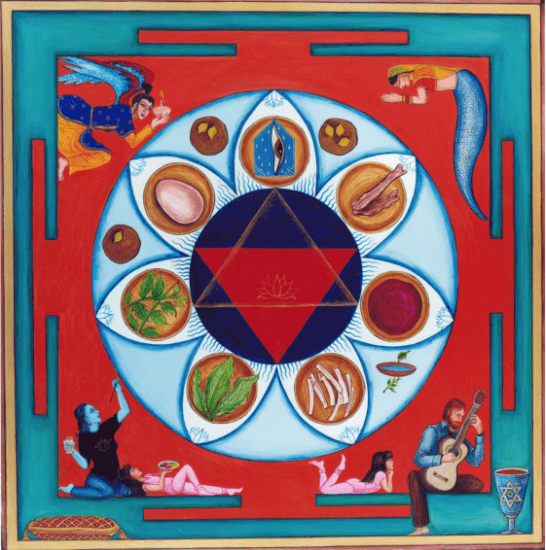
Siona Benjamin, Finding Home #50: “Seder Mandala”, 2001. Gouache on paper. 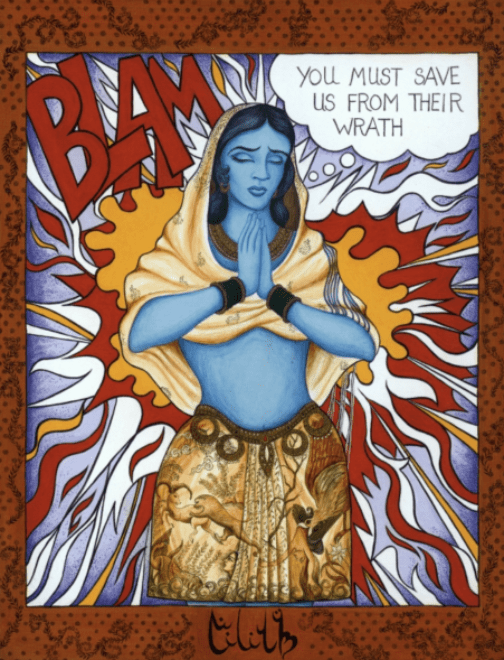
Siona Benjamin, Finding Home #75 (Fereshteh): “Lilith”, 2006. Gouache and gold leaf on wood panel.
GALLERY TALK: Representing Identity Through Popular Culture
Transcript
Siona Benjamin created the Finding Home series reflecting her experience as an Indian Jewish immigrant woman while exploring personal identity. While having a multi-faceted cultural background and experience, the Finding Home series incorporates pillars of different cultures the artist identifies with most closely. Throughout the series, there are instances of social, political, and religious symbols, objects, and visual statements that aid in expressing recurring thematic elements. This series includes many references to both American and Indian popular culture to demonstrate religious themes in conjunction with modern personal experiences. Her encounters with pop culture come from growing up in Mumbai and being surrounded by Bollywood. The merging of figures and symbols in modern pop culture of both Indian and American cultures allows for Benjamin to share her thoughts and experiences in finding an identity that includes each part of her, where she has come from, and where she intends to go.
Specifically, in Indian popular culture, aspects and influence from a well-known Indian comic book series, Amar Chitra Katha, can be seen in her work. Amar Chitra Katha (also called ACK) demonstrates a wide array of stories from different religions contributing to a diasporic understanding of religious traditions. Closely related to and inspired by American comic books, ACK relies heavily on the naturalist tradition. It aims to combine mythology and history along with the sacred and secular, much like the work in her Finding Home series. Superheroes often seen in American comic books are generally depicted as Hindu gods and goddesses in ACK. Benjamin’s work displays inspiration from these characteristics which further builds upon U.S. traditions. Scholar Karline McLaine writes that, as a part of a deliberate nationalist project, the ACK comic book series seeks to enforce the idea of “unity in diversity,” given the wide range of geographic, ethnic, and economic distinctiveness present in India. Although decidedly not a nationalist project, Benjamin’s own diverse religious and cultural background are reflected in the themes and genres found in her work.
In India and the diaspora, there is often a problematic slippage between religion and nationality, in which India is conflated with Hindu. Benjamin challenges these widely preconceived notions by bringing to light the history of Jewish traditions practiced in different communities in India, as well as her choice to draw on a range of religious and cultural traditions—Hindu, Muslim, Parsi, Buddhist, Sikh, and Christian—in her work. Representation of immigrant communities is emphasized in not only this series but in a lot of Benjamin’s work. How different groups are represented is important to constructing a narrative that aids in the understanding of a culture from an outside perspective. Being able to feel the thoughts and emotions of a person or group of people through art offers a dimension of empathy that could have otherwise not been present.
Finding Home #29 shows a mythical woman figure in a large body of water. The mythical creature is representative of immigrants adapting and transforming in an area unfamiliar to them. The subject is looking back at what is considered familiar while actively moving forward to a new “home”. Leaving conflict and violence is represented by the image of an explosion in the background. There is a pop culture reference to the iconic Disney character, Mickey Mouse. The heads of Mickey Mouse are meant to be a sense of lightness in a scene of destruction and fear while amid change. The popular figure and symbol serves as a reminder that people find ways to “create joy in the worst of times”.
Finding Home #50 “Seder Mandala” includes a lot of very personal images and symbols relating to Benjamin. There are two small girls in the bottom left and right corners of the piece possibly representing her daughter. A female artist is also represented in the bottom left corner representing Benjamin herself with a blue skin tone. Females with a blue skin tone recur in a lot of Benjamin’s work signifying the sky and ocean meaning “belonging everywhere and nowhere at the same time”. From a personal perspective, her belonging to and having many identities reflects how she sees herself and why she chose to portray herself with blue skin. There is an angel in the top left corner holding a diya, or lamp, nodding to Hindu tradition. The center of the piece shows a mandala with two overlapping triangles in the center resembling the Star of David, a generally recognized symbol of Jewish identity. The mandala can be seen as a reference to her Circle of Introspection series. The Hindu and Buddhist form of the mandala is used to draw upon ideas of “positive circular mediations in response to the negative circular COVID virus. Mandalas used for religious contemplation also allow practitioners to foster a sense of introspection. Benjamin suggests that we can “find new ways to breathe” with patience, self-reflection, and care. Multiple lotus flowers are present in the middle of the overlapping triangles as well as in the mandala itself which can be attributed to her identity as belonging to the Indian community. The lotus flower represents rebirth which can also be representative of her experience finding home in a new culture and having a new identity be born. The surrounding images symbolize different parts of a seder plate and begin with the image of an eye in a syncretic orientation. The eye could reference the sky or evil eye and resembles a third eye due to its placement. Marking the beginning of Passover, the different parts include a roasted shank bone representing the Pesach (pay sock) sacrifice, an egg representing the circle of life, bitter herbs representing the bitterness of slavery, and a Haroset, a traditional Passover dish.
The portrayal of the biblical figure, Lilith, in Finding Home No. 75 (Fereshteh): “Lilith” takes inspiration from stylistic and thematic influences present in ACK. The combination of words, visual imagery, and the presence of physical objects allow for viewers to use various ways to think to take in and interpret a central message. A chess set is placed in front of the image of Lilith set up with identical pieces. With all of the pieces being the same, Benjamin is condemning the nature of war by illustrating a war you can’t win while also relaying a metaphorical commentary on the pointlessness of violence and war. Bright, flat colors are used with the inclusion of a large onomatopoeia, “BLAM”, taking inspiration from Roy Lichtenstein, in the background. A thought bubble stating “you must save us from their wrath” is placed in the top right corner contributing to the theme which mimics stylistic traditions used in both American and ACK comic books. Protectively, Lilith aims to save us from the wrath of the demons of division and violence. This violence can refer to experiences Benjamin has had and the effects of conflicts related to forms of general division and violence in the world making the piece universal. Lilith’s hands are raised in a familiar prayerful pose, namaskaram, to greet the viewer which makes the piece more interactive and personal. Her pose allows the viewer to interpret Lilith’s intended audience. The audience could be the viewer, a higher power, government officials, etc.
The references to both American and South Asian popular culture add a sense of humor to the serious subject matter and themes present in Benjamin’s work. They add an element of invitation that draws people in and makes heavier or deeper topics more digestible. These references are scattered throughout Benjamin’s work and introduce notes of levity in order to appeal to a more general audience without sacrificing themes important to her and her work. Along with adding lightness, these references incorporate and display important aspects of different parts of her identity as an Indian-Jewish immigrant woman.
Sources
Benjamin, Courtesy of Siona. “Artist Benjamin Finds Home in Exploration of Indian-Jewish Roots.” The Forward, January 27, 2022. https://forward.com/culture/art/481558/blue-like-me-artist-benjamin-finds-home-in-exploration-of-indian-jewish/.
Hall, Stuart, Jessica Evans, and Sean Nixon. Representation / Edited by Stuart Hall, Jessie Evans and Sean Nixon. London: Sage Publications, 2013.
McLain, Karline. India’s Immortal Comic Books: Gods, Kings, and Other Heroes. Indianapolis: Indiana University Press, 2009.
Soltes, Ori Z. “Finding Home: The Transcultural Worlds of Siona Benjamin.” Feminist Studies 38, no. 3 (2012): 689–719. http://www.jstor.org/stable/23720200.
